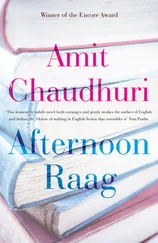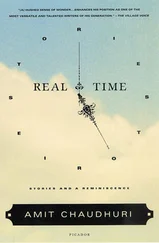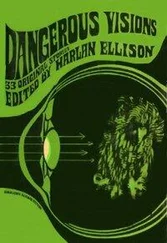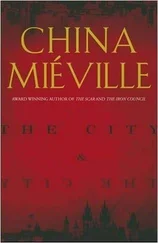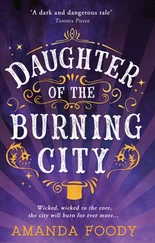In 1999, for a number of reasons, I moved to this city that would soon be without its name: though the official name-change hadn’t taken place. It was, to all purposes, already no longer Calcutta.
For one, I’d had enough of England — not just its weather, rain, and loneliness, but the things about it I’d grown to like: its television, newspapers, and bookshops. I’ve been discussing names; and I can say that, in the new Britain of the nineties, many continued to carry old resonances, while they were actually being hollowed of meaning, emptied of what it was that made one thing — or name — distinct from the other. The most famous and striking example of this were the names of the two major parties, Conservative and Labour, or New Labour. They sounded like parties historically in opposition to each other; in reality, of course, they weren’t. The last great political war in Britain after the miners’ strike (which I’d watched agog for hours on television, as one of the first serially televised political upheavals) was the one between old Labour and New. The confrontations in the latter were less bloody; but its outcome was decisive. New Britain was a country of consensus. Names in the public domain that had meant different things now denoted shades of one thing. For instance, I recall a time when BBC 2 and Channel 4 had particular textures and shapes. A time came — I don’t know when, but it was in the late nineties — when I realised that, though those channels had the old, prickly names, the 2 and 4 always sticking out like a rebarbative angularity, they’d become no different from BBC 1 and ITV — which themselves had grown indistinguishable from each other, like heavyweight premier league football teams that always seem to be at war.
This happened also to English cities, towns, and villages — even to the distinctive connotations those generic appellations had. Once, on a coach from Oxford to Cambridge, half-nauseous because of the convoluted route, I noticed that every place we passed through (the coach doesn’t take the motorway as it winds through the midlands) had a Tesco’s in it and a Texaco outside it. This may seem too obvious today to mention, but then, in the mid-nineties, it was still a gradually unfolding realisation: that the idea of town, village, and city had become anachronistic. I felt, during that trip towards Cambridge, I had nothing left to discover in England; not that discoveries were no longer possible there, but that I had little access to them. Around the mid-nineties, I went to a dinner at a ground-floor flat in Southern Avenue in Calcutta in the winter, and was struck by the paintings on the walls. The flat was Ruby Pal Chowdhury’s, of the Crafts Council, and her husband’s; among the things I noticed in its informal atmosphere was a beautiful clay bust of Mrs. Pal Chowdhury’s mother-in-law: very lifelike and singular, painted white. The elder, late Mrs. Pal Chowdhury seemed to have been, from the expression of the face, a remarkable person. “But it was made by an ordinary artisan from Krishnanagar — no one famous,” protested Ruby Pal Chowdhury. “And it’s clay … very vulnerable. A fall could break it, and a leak in the roof could destroy it.” She seemed suddenly protective, in the midst of that dinner, of the mother-in-law. She showed us a portrait done in oil by an English painter called Harris, who lived in this city for some years in the 1920s: it was unmistakably the mother-in-law again, a young woman, wearing a red sari, gazing into a book. In its stillness, it was less like a picture of a figure than of a vivid cosmological shape: of a new universe that had come into being — which, when you looked closer at it, became a young woman in a sari, reading. I remember thinking that, though Calcutta was now to all purposes dead, it possessed some secrets, and that there were discoveries for me to chance upon here amidst the deceptive nullity — which, for whatever reason, I could no longer in England.
Names … Add to this the publishing houses, whose names I’d been quietly savouring like sensations in the late eighties as I wrote my first novel. Much glamour accrued to them. Heinemann, which first published me, had those alpine, canonical figures, D. H. Lawrence and Thomas Mann — and two emblems of an India that was fading: Anita Desai and R. K. Narayan. It had that symbol of writerly productivity, whom everyone read and, suddenly, almost no one did, Graham Greene. To be part of this list was to insinuate oneself into a history and what felt like a pre-history. Thomas Mann — almost the beginning of the modern novel itself! Just around the corner was Secker and Warburg, where I secretly desired to be, publishing the more recalcitrant, poetic writers: like James Kelman.
Then, irrevocably, these names became interchangeable. As we know, most of them, by 1998 (just a year before I left), were bought over by two German conglomerates. People continued to use the names as if they meant something specific, like a detail in a story. Then they stopped speaking of them in that slightly childish, enchanted way. The world of publishing, and publishers’ names, lost its potency or magic. Had I glimpsed them on the cusp of change, glimmering? Or had I just invented that world? Mann, a deceptive experimenter within the near-extinct forms of realist fiction, may have said “yes” to the second question. Perhaps the meanings of all epochs are unstable, and you need to go on pretending, on some level (as Mann did), that they aren’t. But to be within that world of publishing, as an interloper who’d gained entry into it eight years before, and to feel that it was now no longer itself, that it was essentially foreign, was hard.
I’d had enough of Britain under Blair. I returned to India.
I first met Nirupam Sen at a party. The list of invitees was small; our host was Manoj, a Marwari businessman with a middle-class air. By this I mean he neither looks like a trader nor an industrialist, but a man who has a university background and is in a job. Nevertheless, he was a businessman and was proud of it. The pride came from being something of a one-off, of having made of himself a small-scale success (which, in a booming global economy, and even in a resistant outpost like Calcutta, means considerable wealth), and having done it without the immemorial infrastructure of the Marwari business family. He confirmed his maverick status by casually and tastelessly referring to other Marwaris as Meros. Manoj’s taste in acquaintances and contacts was eclectic: one could run into business types you’d never see anywhere else at his parties; local industrialists of stature, like Harsh Neotia of the construction business; whoever might be the British deputy high commissioner at the time (Manoj has a business venture in England); and the occasional politician, either from the centre right, like the effusive but slightly furtive-looking Dinesh Trivedi, or the unprepossessing Nirupam Sen from the left. Manoj himself was equanimous about his political affiliations. He spoke of his guests as individuals, enthusiastically, rather than in support of their particular political ideology.
This party probably took place in the summer of 2008. I say this because it happened in Manoj’s flat and not on the lovely terraced garden he uses in the winter. I have other means of dating the event. I remember viewing Nirupam Sen as he stood in the distance — the minister for commerce and industry — not as someone on his way out, but one whose task had barely begun. For more than a decade now, the Left Front had been making noises about luring investment to Bengal, of encouraging rapid industrialisation. In the 2006 assembly elections the Front, under Buddhadeb Bhattacharya, successor to the imperious Jyoti Basu, had surprised everyone by returning to power in the state, mainly because the Opposition’s Trinamool alliance, led by Mamata Banerjee, had imploded temperamentally. It had seemed that voters had desperately wanted a change of face, but had been obstinately denied it by the Opposition. Nirupam Sen knew this, and it made of him an attractively realistic and uncomplacent figure. Times had changed; the perpetuity of the Left could no longer be taken for granted; but he was still restrainedly upbeat about the job at hand, a job he’d been more or less entrusted: the industrialisation and economic revival of Bengal. It must have been summer, because had the global crash already occurred (once it did, it exposed capitalism’s fragility, and gave a fleeting fillip to the Left’s vision of the world), we’d have had a different conversation. Also, the great reversals in West Bengal had still not taken place, the developments that would put the Left government in a strange Hamlet-like mood, seeing itself as a caretaker government in 2010, a government that was, after thirty-three undisputed years, in transit, and, by its own admission, only symbolically in power. By “reversals,” I mean, of course, the series of events through which Tata’s Nano project, meant to produce the world’s cheapest small car, had to make an ignominious egress from the state; and the general elections in 2009, which saw an alarming, and record, number of Left Front MPs lose their seats to the Trinamool Congress. At that dinner, all this was to come, and Nirupam Sen was characteristically low-key, but, I believe, optimistic.
Читать дальше

